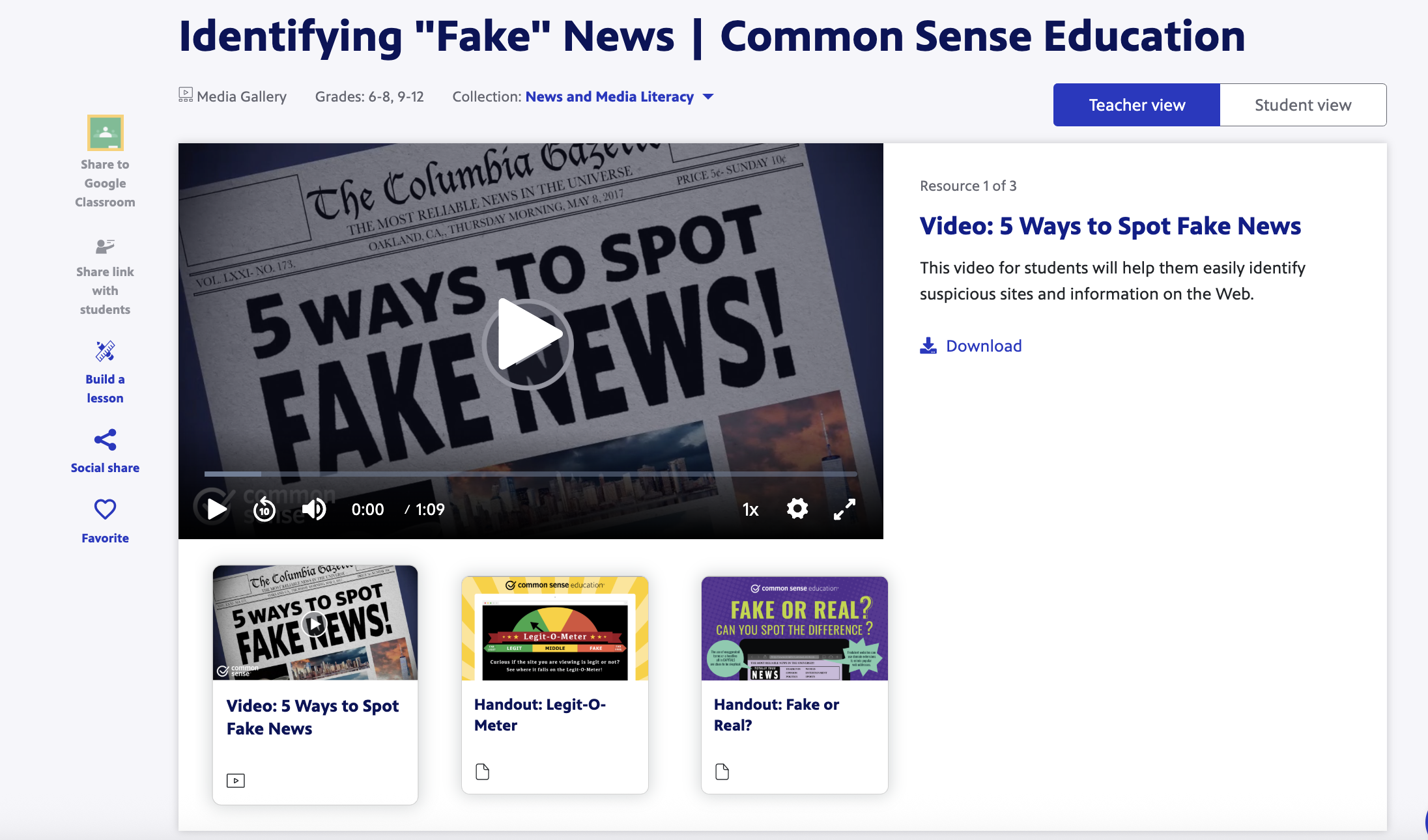Top 3 Free Media Literacy Resources for Teachers: Common Sense, MediaSmarts, and PBS LearningMedia
From misinformation on social media to AI-generated news, students need tools to think critically, evaluate sources, and become responsible digital citizens. Fortunately, there are several high-quality and free media literacy tools for teachers.
Here are three of the most trusted, classroom-ready media literacy curriculum platforms. I have used each either as stand stand-alone lessons or as a launching point for lessons.
1. Common Sense Education: Digital Citizenship & Media Literacy Curriculum
Common Sense Education provides one of the most widely used digital citizenship and media literacy curricula for grades K–12. Their resources help students understand how to recognize misinformation, evaluate online sources, and navigate digital environments responsibly. Slides and lesson plans are ready to use.
Key Features:
Free, standards-aligned media literacy lesson plans
Interactive videos and real-world scenarios
Topics include clickbait, deepfakes, social media pressure, and algorithmic bias
Available in English and Spanish
Aligned with ISTE, CASEL, and state standards
Ready to use slides – simply make a copy
2. MediaSmarts: Canadian Media Literacy That Works Anywhere
MediaSmarts is Canada’s leading media education organization, offering a vast collection of free media literacy resources suitable for both Canadian and U.S. classrooms. Their lessons explore the impact of media on identity, politics, and society—perfect for ELA, social studies, and technology integration.
Key Features:
Free downloadable media literacy lesson plans for K–12
Deep dives into bias, online hate, advertising tactics, and social influence
Includes student handouts, educator guides, and assessment tools
Adaptable across different grade levels and subjects
3. PBS LearningMedia: Engaging Video Lessons on Media Literacy
🌐 https://illinois.pbslearningmedia.org/collection/newsandmedialiteracy/
PBS LearningMedia offers a robust collection of short videos, interactive activities, and full lesson plans that support teaching media literacy at all levels. Their resources help students explore how media affects behavior, emotions, and beliefs—while also teaching how to spot bias and evaluate credibility.
Key Features:
Free video-based media literacy curriculum
Covers bias, misinformation, persuasive techniques, and news literacy
Easily integrates into Google Classroom or LMS
Ideal for bellringers, flipped lessons, or project-based learning
Supports teachers seeking PBS Media Literacy Educator Certification (via KQED)
Snapshot of PBS Learning Media Features
By incorporating tools like Common Sense Education, MediaSmarts, and PBS LearningMedia, you can empower students with the media literacy skills they need to be thoughtful, informed digital citizens. While many other quality tools and resources exist online – these are a starting point to helping students learn how to analyze, question, and think critically about the media they encounter every day.


